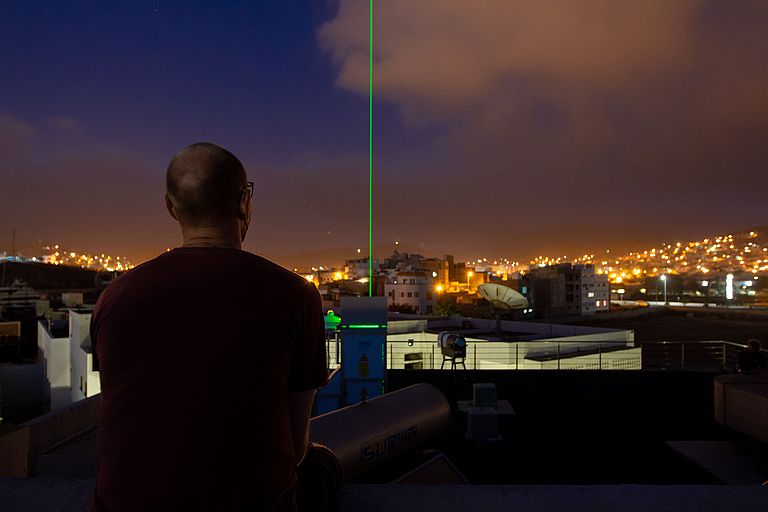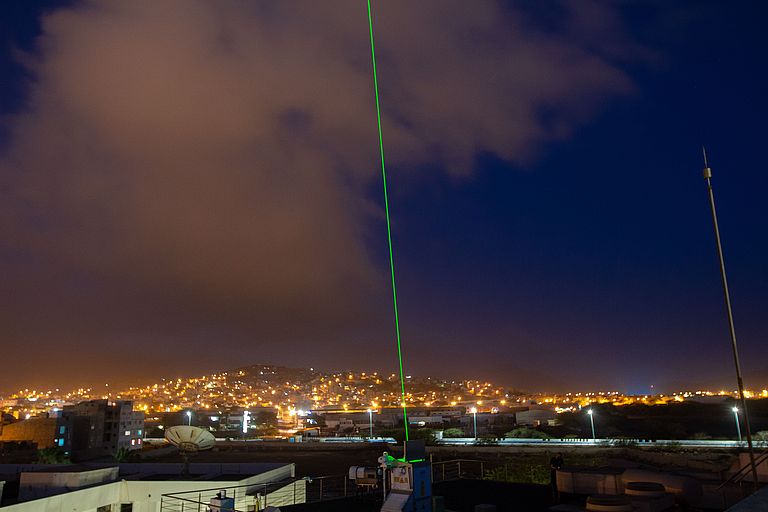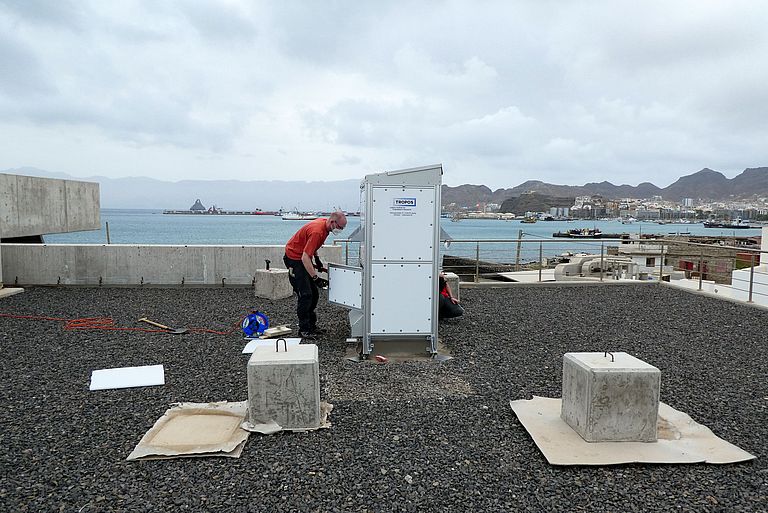New Laser Measurement System at the Ocean Science Centre Mindelo
Investigating Saharan Dust in the Atmosphere above the Island of Sāo Vicente
The Ocean Science Centre Mindelo (OSCM) located on the Cabo Verdean Island São Vicente is an ideal base for both ocean and atmosphere research in the tropics, jointly operated by the Cabo Verdean Instituto do Mar and the GEOMAR Helmholtz Centre for Ocean Research Kiel, Germany. The island is surrounded by the tropical Atlantic, known as a giant weather engine that features phenomena like hurricanes, heavy monsoon and climate oscillations. Despite the fact that the tropical Atlantic has a major influence on the world's climate, scientific data from this region is still very limited. In addition, Cabo Verde lies right in the path of sandstorms and bushfire smoke that travels westwards from the African continent to the open Atlantic which exposes the local population also to serious health risks. Altogether, this calls for better observation capacities of atmospheric dust in the region.
Related to dust and other types of atmospheric particles, examples of key questions are:
- Atmosphere and weather: What types of particles reach Cabo Verde at which altitudes from which areas in Africa, how do the particles impact clouds and radiation?
- Atmosphere and ocean: Do the particles supply elements to the ocean which might be necessary for algae or for nutrients production which might be beneficial for the ocean’s biodiversity?
- Atmosphere and health: Are the particles risky for the people of Cabo Verde and if yes how, are diseases related to particle-carried viruses and possible bacteria?
In order to improve the data availability and our understanding of this tropical region, researchers from atmospheric and oceanic disciplines have established networks and research platforms in Cabo Verde during the past years. Two of the most important research platforms are the Cape Verde Ocean Observatory (CVOO) and the Cape Verde Atmospheric Observatory (CVAO).
With the new LiDAR PollyXT for campaigns at the OSCM, international research in Cabo Verde is reaching a new and very exciting level. The installation and operation of the TROPOS LiDAR at the OSCM is a preparation for a comprehensive international research campaign. Within this campaign TROPOS, INMG and the OSCM, are part of the ESA-organised Aeolus Tropical Atlantic Campaign (A-TAC). This large-scale campaign comprises space, airborne and ground-based activities mainly addressing tropical wind and aerosol validation measurements. In the context of this campaign, wind speed measurements recorded by the ESA satellite Aeolus will be compared and validated with ground-based laser measurements from the LiDAR PollyXT. These validation measurements are expected to significantly improve wind and weather forecasts in the tropical Atlantic.
In addition to validation measurements, the LiDAR PollyXT system at the OSCM will also contribute to investigate clouds and aerosols in the tropics and thus help to better understand the formation of tropical cyclones. The campaign will be further expanded by the temporary deployment of a second LiDAR system, called EVE, which is being set up by Greek scientists from the National Observatory of Athens (NOA) on São Vicente. Both LiDAR systems, PollyXT from TROPOS and EVE from NOA will measure dust particles and thus provide ground-based data for a better interpretation of the Aeolus satellite data.
A further highlight of this large-scale international campaign will be reached in September 2021, when the space- and ground-based measurements are complemented by airborne validation measurements. The airborne component includes the use of research aircrafts. One of the research aircraft is the Falcon-20 from the German Aerospace Center (DLR, Germany), the P-3 Orion from the National Aeronautics and Space Administration (NASA, USA) as well as a Slovenian small research aircraft.
The OSCM will host mission scientists and support this comprehensive, international and interdisciplinary research campaign with its facilities, thereby making a very important contribution to broadening the scope of research capacities in Cabo Verde.





